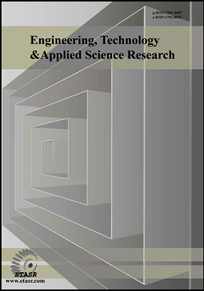Enhancing Security in Healthcare Frameworks using Optimal Deep Learning-based Attack Detection and Classification for Medical Wireless Sensor Networks
Received: 29 November 2024 | Revised: 13 December 2024 | Accepted: 31 December 2024 | Online: 10 February 2025
Corresponding author: Ranathive Shanmugavelu
Abstract
Wireless Sensor Networks (WSNs) have modernized healthcare, providing vital sign collection and real-time patient monitoring. Healthcare WSNs are vulnerable to cyberattacks, such as false data injection, sensor manipulation, and data eavesdropping, which can disrupt monitoring and endanger patient lives. Traditional Intrusion Detection Systems (IDSs) based on static signatures struggle with evolving threats. Deep Learning (DL)-based IDSs, combined with Feature Selection (FS), offer a more adaptive and effective solution, improving attack detection and protecting patient data. This work presents an innovative Pigeon-Inspired Optimizer-based Feature Selection with Deep Learning-based Attack Detection and Classification (PIOFS-DLADC) method, which focuses on creating an optimal DL framework for attack detection and classification in healthcare WSNs. Initially, patient health data (actual input data) undergo preprocessing using the one-hot encoding system. Then, the PIOFS method selects key features from sensor data streams, reducing dimensionality and improving model efficiency. Furthermore, an attention-based Bidirectional Gated Recurrent Unit (BiGRU) method captures long-term dependencies and prioritizes features for accurate attack classification. The Coati Optimization Algorithm (COA) is employed to tune the hyperparameters of the DL models. The model efficiently explores the hyperparameter space, optimizing the performance for attack detection and classification. Validated on a healthcare WSN dataset, the PIOFS-DLADC model demonstrated an accuracy of 96.78%, which is superior to existing approaches.
Keywords:
wireless sensor networks, feature selection, coati optimization algorithm, attack detection, deep learningDownloads
References
G. Santhoshkumar and P. Ghosh, "Seismic stability analysis of a hunchbacked retaining wall under passive state using method of stress characteristics," Acta Geotechnica, vol. 15, no. 10, pp. 2969–2982, Oct. 2020.
A. R. Karkanaki, N. Ganjian, and F. Askari, "Stability Analysis and Design of Cantilever Retaining Walls with Regard to Possible Failure Mechanisms: An Upper Bound Limit Analysis Approach," Geotechnical and Geological Engineering, vol. 3, no. 35, pp. 1079–1092, Jan. 2017.
H. A. Chehade, X. Guo, D. Dias, M. Sadek, O. Jenck, and F. H. Chehade, "Reliability analysis for internal seismic stability of geosynthetic-reinforced soil walls," Geosynthetics International, vol. 30, no. 3, pp. 296–314, Jun. 2023.
A. GuhaRay and D. K. Baidya, "Reliability Coupled Sensitivity-Based Seismic Analysis of Gravity Retaining Wall Using Pseudostatic Approach," Journal of Geotechnical and Geoenvironmental Engineering, vol. 142, no. 6, Jun. 2016, Art. no 04016010.
V. Sundaravel and G. R. Dodagoudar, "Deformation and Stability Analyses of Hybrid Earth Retaining Structures," International Journal of Geosynthetics and Ground Engineering, vol. 6, no. 3, Aug. 2020, Art. no. 37.
K. Papadopoulou and A. Sofianos, "Factors Affecting the Behaviour of Retaining Structures with Prestressed Anchorages Under 2D and 3D Conditions," Geotechnical and Geological Engineering, vol. 34, no. 6, pp. 1877–1887, Dec. 2016.
S. M. Ahmed and B. M. Basha, "External Stability Analysis of Narrow Backfilled Gravity Retaining Walls," Geotechnical and Geological Engineering, vol. 39, no. 2, pp. 1603–1620, Feb. 2021.
S. Nimbalkar, A. Pain, and V. S. R. Annapareddy, "A Strain Dependent Approach for Seismic Stability Assessment of Rigid Retaining Wall," Geotechnical and Geological Engineering, vol. 38, no. 6, pp. 6041–6055, Dec. 2020.
P. J. Fox, "Analytical Solutions for Internal Stability of a Geosynthetic-Reinforced Soil Retaining Wall at the Limit State," Journal of Geotechnical and Geoenvironmental Engineering, vol. 148, no. 10, Oct. 2022, Art. no. 04022076.
A. R. Kalantari and A. Johari, "System Reliability Analysis for Seismic Stability of the Soldier Pile Wall Using the Conditional Random Finite-Element Method," International Journal of Geomechanics, vol. 22, no. 10, Oct. 2022, Art. no. 04022159.
C.-C. Huang and Y.-H. Chen, "Seismic Stability of Soil Retaining Walls Situated on Slope," Journal of Geotechnical and Geoenvironmental Engineering, vol. 130, no. 1, pp. 45–57, Jan. 2004.
L. N. Vo, T. X. Dang, P. T. Nguyen, H. V. V. Tran, and T. A. Nguyen, "A Novel Methodological Approach to assessing Deformation and Force in Barrette Walls using FEM and ANOVA," Engineering, Technology & Applied Science Research, vol. 14, no. 5, pp. 16395–16403, Oct. 2024.
T. X. Dang, P. T. Nguyen, T. A. Nguyen, and H. V. V. Tran, "Optimization of Barrette Wall Depths for Urban Excavation Stability Using FEM and ANOVA Testing," Civil Engineering and Architecture, vol. 12, no. 5, pp. 3530–3544, Sep. 2024.
Downloads
How to Cite
License
Copyright (c) 2025 Ranathive Shanmugavelu, Vidhya Ravi

This work is licensed under a Creative Commons Attribution 4.0 International License.
Authors who publish with this journal agree to the following terms:
- Authors retain the copyright and grant the journal the right of first publication with the work simultaneously licensed under a Creative Commons Attribution License that allows others to share the work with an acknowledgement of the work's authorship and initial publication in this journal.
- Authors are able to enter into separate, additional contractual arrangements for the non-exclusive distribution of the journal's published version of the work (e.g., post it to an institutional repository or publish it in a book), with an acknowledgement of its initial publication in this journal.
- Authors are permitted and encouraged to post their work online (e.g., in institutional repositories or on their website) after its publication in ETASR with an acknowledgement of its initial publication in this journal.






